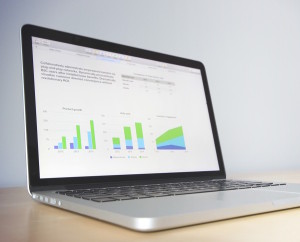 Restaurant operators know that controlling labor spending is vital to maintaining profitability. High turnover rates, government regulations and growing labor costs make it more important than ever to effectively manage these outlays.
Restaurant operators know that controlling labor spending is vital to maintaining profitability. High turnover rates, government regulations and growing labor costs make it more important than ever to effectively manage these outlays.
Improving the usage and efficiency of your restaurant’s labor force is a lot easier with the right system for labor management. If you are ready to upgrade your labor management system, the Restaurant Technology Guys have a list of five elements to look for while you shop around.
Restaurant Labor Management Systems: What to Look For
1) Advanced Features
 There isn’t much use in upgrading your labor management system if it doesn’t improve upon your previous program. The right system for your restaurant should include features like:
There isn’t much use in upgrading your labor management system if it doesn’t improve upon your previous program. The right system for your restaurant should include features like:
- Attendance and time tracking
- Validation of employee clock-ins and -outs
- Build and enforce forecast-based schedules
- Payroll report generation
- Manage new hires, transfers and terminations
If your current system lacks any of these features – which is only a partial list of the benefits available from newer labor management programs – an upgrade could save you from hours of future headaches while you manage your staff’s hours.
2) Ease of Use
Your new labor management system should do more than an older program – but it should also make it easier to complete tasks as well.
By incorporating sales data and historical information into your scheduling, you’ll be able to anticipate labor needs and schedule more efficiently.
The POSitouch system from CBS Northstar, for example, offers two different methods for scheduling employees based on restaurant data. The first is a budget-based scheduler, which relies on labor cost dollar and percentage targets to identify labor needs. The second, a forecast-based scheduler, uses historical data and staffing guides to develop scheduling targets. Both formats are graphical and use techniques like drag-and-drop to simplify the process.
3) Access From Anywhere
 Making a schedule for your staff shouldn’t require hours at an outdated computer in a cramped back office. Among the benefits of cloud-based restaurant management solutions is the ability to access your POS system from any Internet-equipped device, including smartphones, tablets, and laptops.
Making a schedule for your staff shouldn’t require hours at an outdated computer in a cramped back office. Among the benefits of cloud-based restaurant management solutions is the ability to access your POS system from any Internet-equipped device, including smartphones, tablets, and laptops.
Moving your labor management system to the cloud will also make it easier for employees to trade shifts – they can see the schedule from their own devices and communicate with co-workers to adjust their schedules.
4) Compliance with Regulations
The tracking data available in your updated labor management program can also help you prevent hours overages among your team. Real-time monitoring of employee hours will allow you to make sure that workers are not surpassing 30 hours a week, which would qualify them as full-time staff who are eligible for health care benefits.
Labor tracking information also helps reduce overtime. You can set up notifications that will alert you to workers who are close to exceeding their hours limit, which helps managers cut hours during slower periods earlier in the week.
5) Increased Security & Storage
 Cloud-based operations programs, including Software as a Service (SaaS) systems, are designed to protect your information with high-level encryption. Unlike on-site computers in a traditional POS system, which save complete payment and customer data and can be breached by hackers, cloud-based systems don’t require credit card data storage.
Cloud-based operations programs, including Software as a Service (SaaS) systems, are designed to protect your information with high-level encryption. Unlike on-site computers in a traditional POS system, which save complete payment and customer data and can be breached by hackers, cloud-based systems don’t require credit card data storage.
And speaking of storage: on-premise computers are eventually limited by a finite amount of storage space. Restaurant managers will eventually have to offload data to a backup hard drive to keep operations running at full capacity.
In contrast, SaaS systems that operate “in the cloud” have access to unlimited storage capacity. Also, moving your data to the cloud will protect you in the event of an accident or emergency that damages your on-site hardware.
